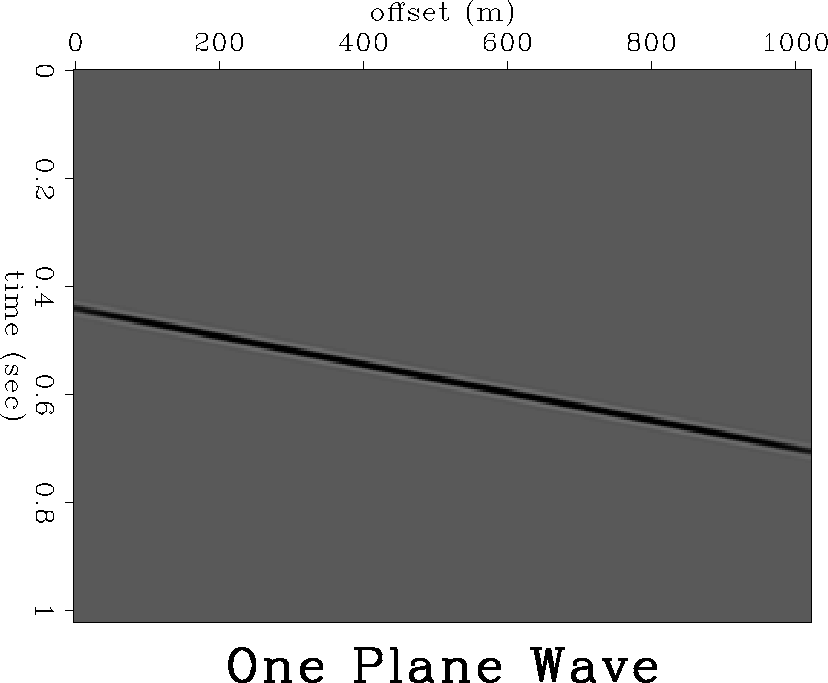




Next: Wavefield composed of two
Up: ESTIMATION OF SPATIAL PREDICTION
Previous: ESTIMATION OF SPATIAL PREDICTION
As shown in Figure 5, this wavefield in the t-x domain
can be expressed by
|  |
(5) |
one-plane-wave
Figure 5 A synthetic wavefield composed of a single plane wave.
|
|  |





After Fourier transform along the time axis, we get the expression in the
f-x domain:
|  |
(6) |
It is easy to show that one trace can be predicted from an adjacent trace:
|  |
(7) |
Or in another form,
|  |
(8) |
This means that, each trace can be predicted with the propagator
 . Up to now, we have not mentioned FIG
and FDG. Therefore, all above conclusions are effective for both cases.
But when we introduce the details of the two schemes, we will reach different
conclusions:
. Up to now, we have not mentioned FIG
and FDG. Therefore, all above conclusions are effective for both cases.
But when we introduce the details of the two schemes, we will reach different
conclusions:
- Frequency-independent grids
 is constant. The propagator P1 is the function
of frequency f. It will change from one frequency slice to
another.
is constant. The propagator P1 is the function
of frequency f. It will change from one frequency slice to
another.
- Frequency-dependent grids
From (3), we can choose
|  |
(9) |
Therefore, the propagator P1 becomes
|  |
(10) |
So the propagator P1 is frequency-invariant.





Next: Wavefield composed of two
Up: ESTIMATION OF SPATIAL PREDICTION
Previous: ESTIMATION OF SPATIAL PREDICTION
Stanford Exploration Project
11/11/1997
